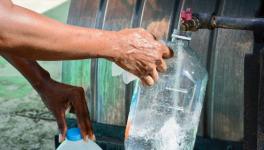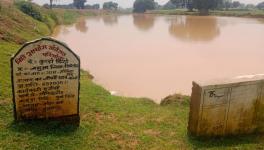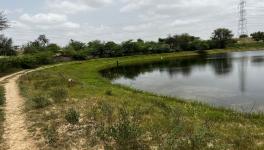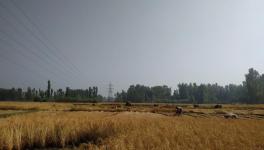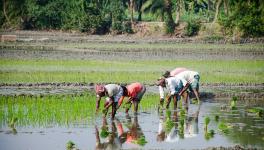Bihar: As Rainfall Patterns Shift, Handpump Boring Workers Struggle to Reach Falling Water Table
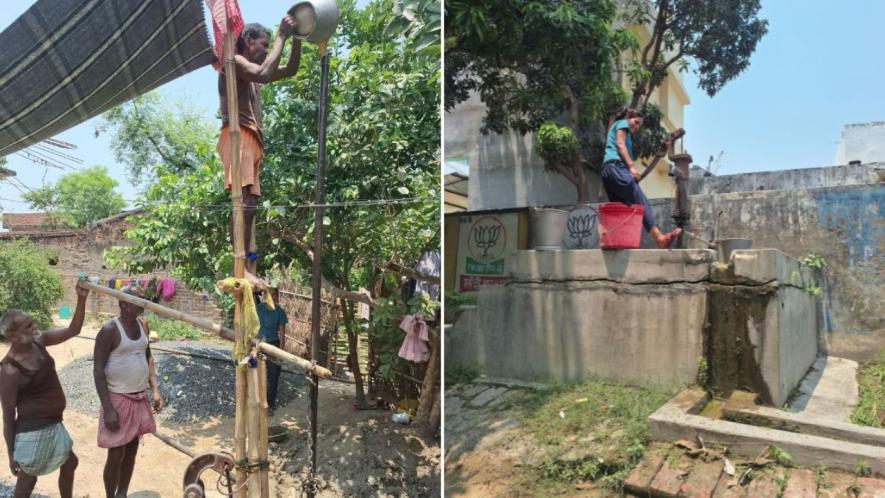
Darbhanga, Bihar: Mohammad Abul Hasan (70) has worked in the manual handpump boring trade for over 40 years in Bharwara village in Darbhanga, Bihar. But in summers, which ideally should be his busiest season, he avoids taking up new installations.
The reason, he said, is the falling groundwater table in the region. “If the pump doesn’t yield water, we don’t get paid,” Hasan explained. He attributed the change to the absence of annual flooding, which was once common in the area. “Earlier, floods used to recharge the groundwater. Even in peak summers like June, we had enough water. That’s no longer the case.”
Since 2019, flooding has been noticeably absent in Darbhanga district. Once a water-rich region, it is now facing an acute water crisis. Traditionally known for its paan (betel leaves), maachh (fish), and makhana (fox nutes), the district is struggling with rising temperatures, erratic rainfall, and intensive farming that has hardened the soil. Groundwater recharge has reduced, and several villages are reporting drinking water shortages.
The Bihar State Disaster Authority has observed that in the absence of adequate rainfall, large parts of the state—especially North Bihar, usually prone to floods—are now experiencing drought-like conditions. The India Meteorological Department’s annual monsoon report for 2024 also showed large parts of Bihar in red and yellow, indicating a rainfall deficit and large rainfall deficit. This led to widespread crop failures across several districts, including Darbhanga.
At the same time, Darbhanga experienced intense flooding between September 26 and 29 last year, affecting nearly five lakh people and causing significant displacement and damage. According to the IMD, Bihar, along with Arunachal Pradesh and Assam-Meghalaya, was among the few regions to record deficient rainfall during the southwest monsoon this year. The state, accounting for 9% of India’s total area, now oscillates between flood and drought conditions.
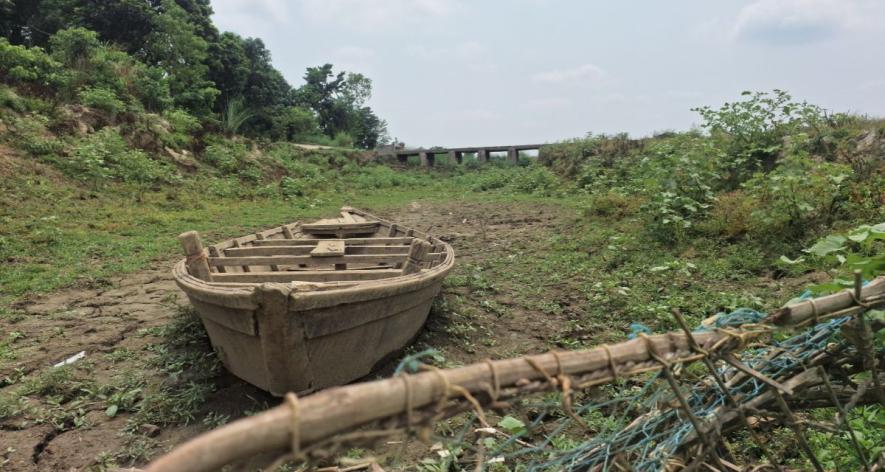
The Bihar State Disaster Authority has observed that in the absence of adequate rainfall, large parts of the state—especially North Bihar, usually prone to floods—are now experiencing drought-like conditions.
Amid these shifts, manual handpump installers like Hasan are finding their work increasingly difficult.
High risk, low reward
Manual handpump installation is typically carried out by teams of three to four workers. Using bamboo poles, rope, and a steel jack, they can drive pipes to depths of 40-60 feet in a day under normal soil conditions. Reaching 100 feet manually takes several days. One worker at the base holds and guides the pipe, while others use bamboo poles and a jack to move it up and down in a steady rhythm.
The most strenuous position is that of the bottom worker, who bears much of the weight and vibration while controlling the pipe’s direction. The top worker, balancing 10-12 feet above the ground, faces the greatest risk: standing for eight to ten hours a day without safety gear.
Shivchandra Baitha (59), a resident of Singhwara, has been installing handpumps since his teenage years. “Boring the pipe while standing on top is not easy; it requires balance, patience, and experience. A small slip can mean falling 10-12 feet,” he said. Injuries from such falls are often serious, even fatal. Despite decades of experience, Baitha earns between Rs 450 and Rs 600 per day.
The handpump installers say that the younger generation is leaving the trade. “Our sons see no future in this,” Baitha said. “They’d rather go to Delhi than dig for water that isn’t there.”
A survey conducted by this reporter in several villages under Singhwara block—such as Rampur, Sadha, Hanuman Nagar, Simri, Khurd Manihas, Atarwel, and Bithauli—found that piped water supply was absent, and residents depended entirely on handpumps and motor pumps. In such circumstances, Baitha’s work remains crucial.
Workers often hit layers of stone at depths of 60-80 feet. Upendra Mahto (59) and Ranjeet Das (58), both handpump installers from the same block, explained the associated physical challenge. “It’s nearly impossible to break the stones manually. Sometimes we try, but usually we have to abandon the spot and start fresh elsewhere,” they said.
Drying livelihood
In villages like Rampura, Vaidehi Devi (62) said her earlier handpump was only 100 feet deep. “Now we’ve installed a new one at 180 feet,” she said. “But even that dries up in May and June.” At such depths, manual boring is no longer possible; motorised drilling rigs, which cost several thousand rupees, are required.
Though the Central Ground Water Board (CGWB) has marked all blocks in Darbhanga as “safe”, a 2021 survey by the state’s Public Health Engineering Department (PHED) classified 11 districts in Bihar, including Darbhanga, as “water-stressed”. During the summer, workers are forced to dig deeper than ever before, and if their efforts fail to yield water, they return home empty-handed.
Small rocks, workers hit while digging, can sometimes be dislodged manually, but larger stones force them to abandon the site. In 5-10% of cases, they receive no payment at all. Many villages that once struck clean water at 100-120 feet now need to go down 180-220 feet.
Sushil Thakur, a handpump supplier in Singhwara, said, “Out of 30-35 handpumps we install each month, two or three fail completely. Either the pump stops yielding water or dries up soon after.” He blamed declining rainfall over the last few years for this trend.
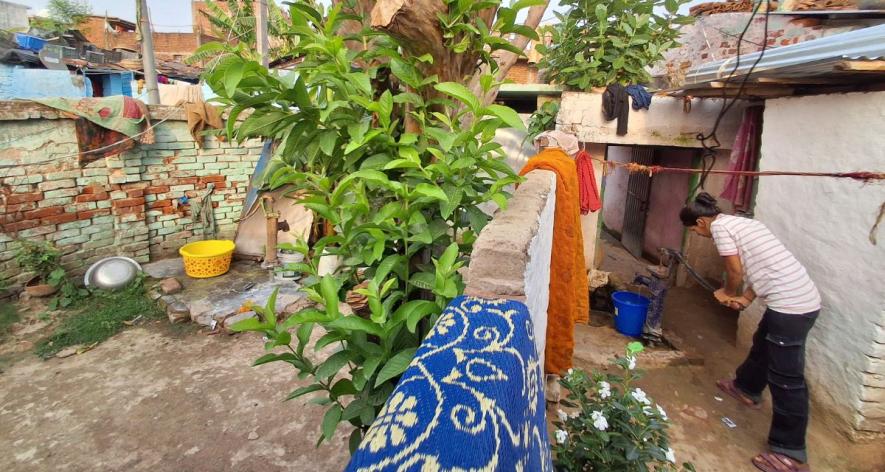
Harijan Tola, Singhwara North, Darbhanga (Photo - Saurabh Chaubey, 101Reporters).
Data decoded
Dr Shashidhar Jha, Climate Scientist and Director of Research at the Bodhi Centre, pointed to a 5-10% decline in cumulative annual rainfall and 10-15% fewer rainy days in Bihar. “Yet, extreme rainfall events—more than 100 mm a day—have become more frequent. These intense downpours often fail to replenish groundwater, instead flowing directly into rivers like the Ganga and Kosi,” he told 101Reporters.
Data shows a sharp decline in rainfall over the last decade. Researchers at Dr Rajendra Prasad Central Agricultural University, Pusa, found that while the region received over 1,000 millimetres of rain annually until around 2020, the average has since fallen by nearly a third.
Professor Colonel Sanjay Srivastava, chairman of the Climate Resilient Observing Systems Promotion Council, said long-term data points to a clear shift. “Regions like Rajasthan and Gujarat, once drought-prone, are now getting above-average rainfall, while eastern states such as Bihar and Jharkhand are facing deficits,” he said.
Economist Mani Bhushan Jha of the Bodhi Centre described the falling water table as a “tragedy of the commons.” “Where water was once available at 40-60 feet, it now often requires boring beyond 200 feet, even in floodplains,” he said. “Multiple borewells compete for the same aquifer, depleting it faster than it can refill.”
Saurabh Chaubey is a freelance journalist and a member of 101Reporters, a pan-India network of grassroots reporters.
Get the latest reports & analysis with people's perspective on Protests, movements & deep analytical videos, discussions of the current affairs in your Telegram app. Subscribe to NewsClick's Telegram channel & get Real-Time updates on stories, as they get published on our website.









